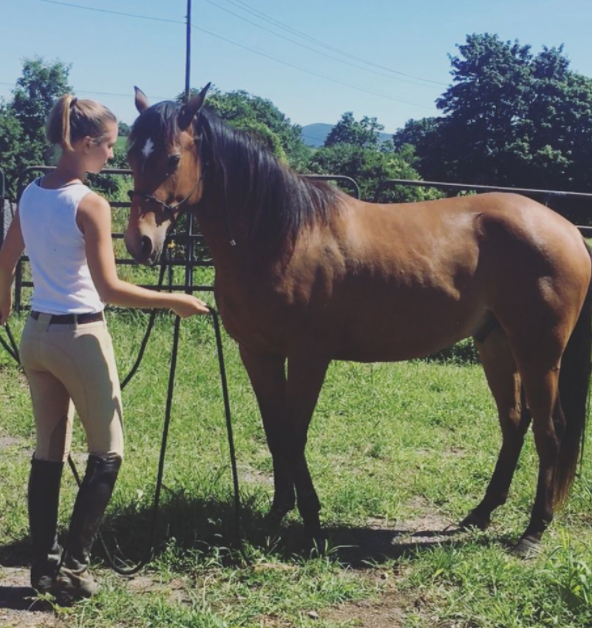There is a significant amount of work required out of the saddle to care for a horse – riding itself is a small portion of what riders do. From cleaning stalls to picking hooves to lugging water buckets to haltering and leading a horse, horsemanship develops and is fostered largely on the ground.
But how much do we really think about that?
Of course, remaining aware at all times around horses is critical. But how often do we set our intention or goal of a session to focus on communication from the ground? My previous article on body language in training focused on the need for awareness of communication in riding or longeing… but what about our communication out of the tack?
In this two part series, there are two areas in which I want to challenge myself, and others, to grow. The first is groundwork sessions.
Spending time focusing on communication from the ground is important at all stages of horse development – from starting a horse (above) to working with experienced competitors.
To explore the skill of groundwork, I went to a Buck Brannaman clinic in 2019 where I picked up on techniques to help connect with horses out of the tack. Some of the concepts you can find in this video helped me develop a pre-ride groundwork routine for me and my horse.
Typically, I work on connecting with my horse by having both of us focus on each other in walking side by side, asking her to stop when I stop (solely based on the change in my body’s energy), back up (again, only by shifting my energy back), or turning (as I ask her to step her hind and front ends over based on my body position).
In addition to these exercises, Tik Maynard provides some additional specific techniques to try in this article in Practical Horseman that work to develop partnership while providing fun new ways to connect.
Exercises like the ones Buck and Tik mention are important in gaining horses’ attention to physical movements and increasing our awareness of their body language. Beyond this though, another aim I have for these sessions is to stay in touch with my own energy and work to influence my horse’s energy through mine. This step up to both physical and emotional connections have made the groundwork incredibly beneficial.
A great example of this is seen in Warwick Schiller’s video on internal energy. In the video, he discusses how knowing and changing your energy to influence the horse’s energy assists in connecting you and the horse on the same wavelength. It gives you a soft, responsive dialogue in which to work.
I love the focus this brings to our session, allowing us to start from a place of relaxation and togetherness.
Working with horses on the ground is an important, yet accessible tool to clarify communication, mix up your training, and connect on a deeper level. It has the ability to help us increase our awareness of the subtleties in movement and learn about our horse in a different capacity. This increased awareness and strengthened connection can develop outside of specific groundwork sessions too, which I’ll discuss in my next article.

